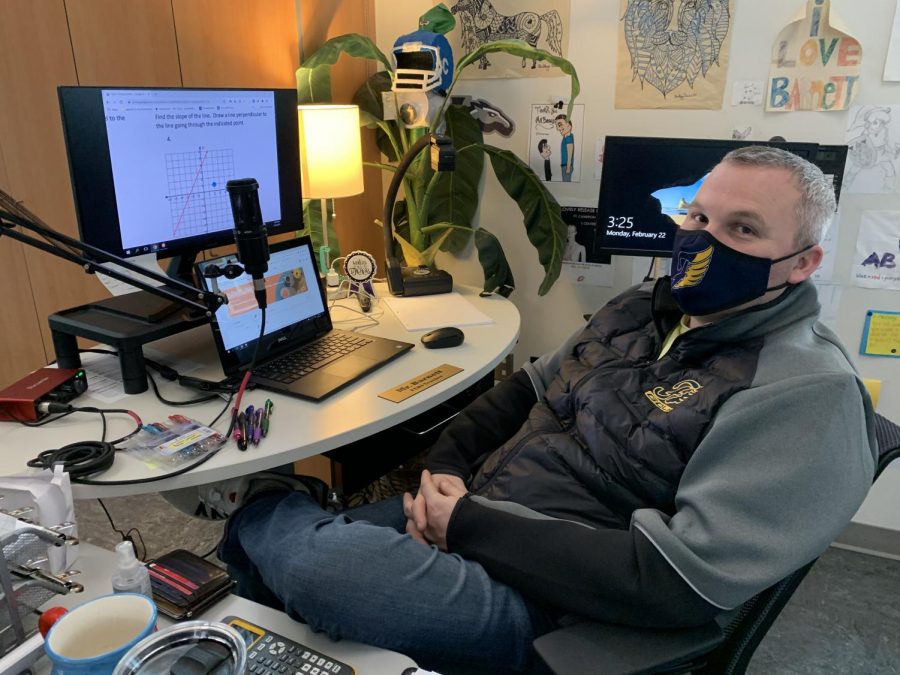Photo courtesy of Claire Barnett
Math teacher Jason Barnett readies for another virtual learning session.
Teaching in a Pandemic
February 23, 2021
COVID-19 has rewritten the world’s definition of “normal” over the past year. How to run the education system has been a controversial topic throughout the United States. Students are learning to navigate this new world while getting an education. However, teachers are having to revise their entire curriculum to accommodate this new “normal.”
At an elementary level, teaching can be a challenge, but in the middle of a world-wide pandemic it has been presented with a completely different set of obstacles.
For fourth grade Carysbrook Elementary teacher Elizabeth Barnett, the job has become much more challenging. “It’s kind of like starting over. You have to rethink everything you’ve ever done and adapt it to the “virtual world.” Barnett noted the difficulties in converting her curriculum to a virtual format that supports and expands her students’ knowledge on the subject. “Having to recreate every lesson has been a challenge. Every lesson is tangible, it’s not digital. Assessing their knowledge and knowing if they’re understanding anything that you’re teaching has been difficult,” she added.
Reinventing teaching so that is beneficial to students at an elementary level comes with its own set of obstacles in a virtual world. “[Students’] age, maturity level, and attention span have all proven to be lower in this format. Keeping them from being distracted is always a challenge, but more so when they are on the other side of a screen instead of in front of me,” said Barnett.
Middle school can be a challenging point in a student’s education as they are experiencing significant personal and emotional changes and more responsibilities. Seventh grade teacher Kristen Davis has had her own set of challenges this year. “I do not have any kids in my classroom since I am a completely virtual teacher. It is hard to understand when kids don’t get something and won’t communicate that to you. There’s a lot of kids who do not ask or communicate for help,” she noted.
Still, educating her classes completely through a screen has given Davis an opportunity to explore a new method of teaching. Creating workable ways to stay organized and connected to her students has proved to be Davis’ strong-suit. Developing an innovative way of creating assignments and organizing them for her students has helped her and her students transition into a virtual education.
As for high school students, the virtual or hybrid learning experience has increased the stress often experienced by teens. This has presented, high school teachers, like FCHS math teacher Jason Barnett, with some unprecedented difficulties. “A lot of the success I have seen in my classroom is built on rapport. [So] the lack of students that are in the room makes it difficult to form that relationship with my students,” he noted. As a result, Barnett has been looking for new ways to help his students understand the material. “You can’t see behind the screen, so you have to find different ways to figure out whether or not they understand what you’re saying or teaching.”
Reaching and staying connected to students during this pandemic has been a struggle for teachers which appears likely to persist through the end of this school year. With talk of at least some sort of virtual component heading into next school year, the unique challenges associated with teaching during a pandemic appear likely to persist for some time.


Beth Fisher • Feb 23, 2021 at 3:58 PM
I’m impressed. Your education from the Fluvanna County school system has served you well. Writing is both a talent and a skill. You have been blessed with both. I said all this to say “GREAT JOB!”
Jen Payne • Feb 23, 2021 at 2:21 PM
Way to go Claire! Field Hockey star and journalist!!!Great article.